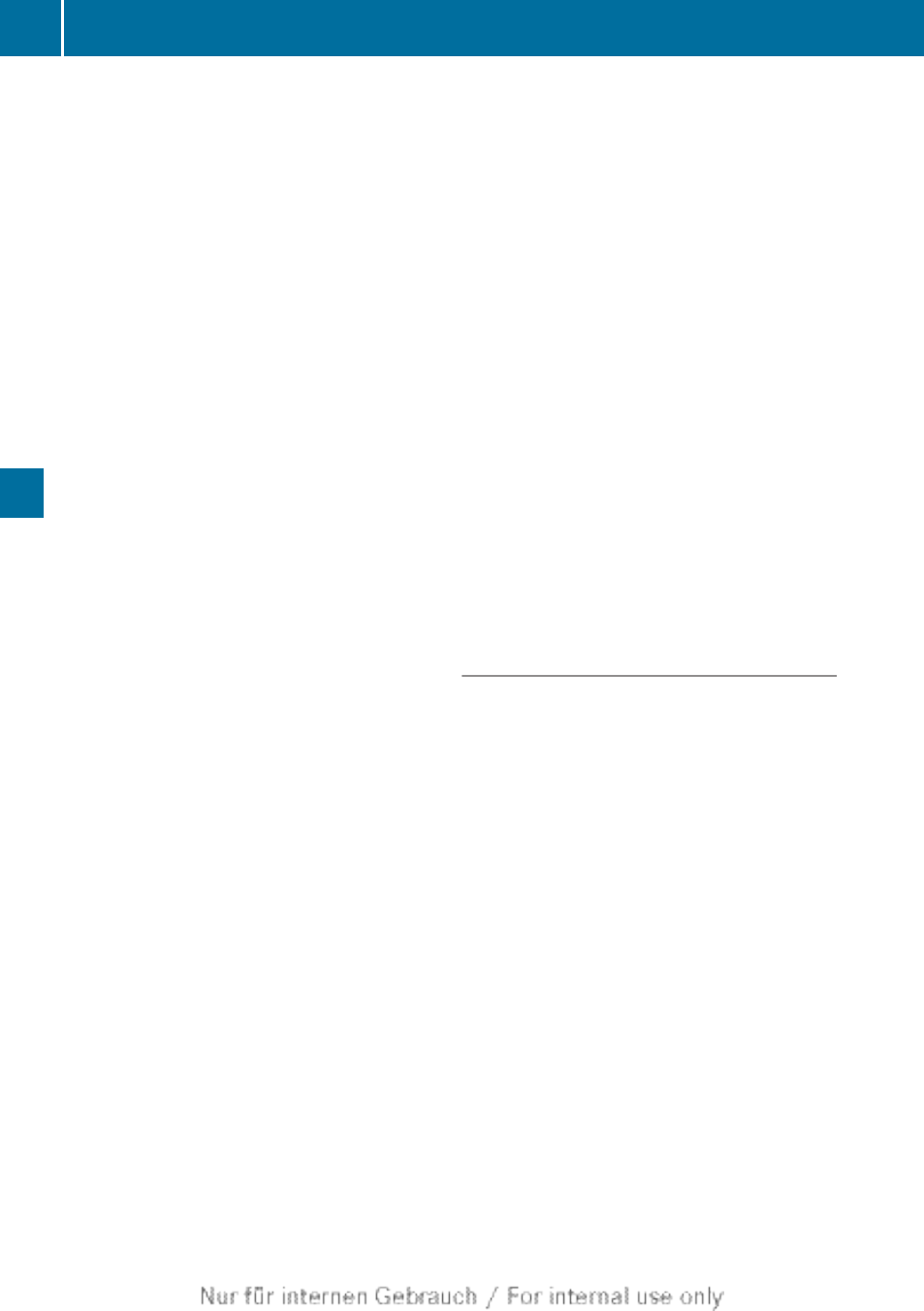Driving and parking, Towing a trailer – Mercedes-Benz 2013 CLA Class User Manual
Page 204

To avoid hazardous situations:
R
make sure to check the noseweight before
each journey.
R
use a drawbar noseweight as close as pos-
sible to the maximum noseweight.
R
do not exceed the maximum permissible
noseweight.
R
do not use a noseweight lower than the
minimum permissible trailer drawbar nose-
weight.
You can use carrier systems, e.g. bicycle
racks or load-bearing implements, on the ball
coupling. The maximum noseweight of
75 kg applies when using carrier systems on
the ball coupling.
When reversing the vehicle towards the
trailer, make sure there is nobody between
the trailer and the vehicle.
Couple and uncouple the trailer carefully. If
you do not couple the trailer to the towing
vehicle correctly, the trailer could become
detached.
Make sure that the following values are not
exceeded:
R
the permissible trailer drawbar noseweight
R
the permissible trailer load
R
the permissible rear axle load of the towing
vehicle
R
the maximum permissible gross vehicle
weight of both the towing vehicle and the
trailer
The applicable permissible values, which
must not be exceeded, can be found:
R
in your vehicle documents
R
on the identification plates of the trailer tow
hitch and the trailer
R
on the vehicle identification plate
If the values differ, the lowest value applies.
You will find the values approved by the man-
ufacturer on the vehicle identification plates
and those for the towing vehicle in the "Tech-
nical data" section.
When towing a trailer, your vehicle's handling
characteristics will be different in comparison
to when driving without a trailer.
The vehicle/trailer combination:
R
is heavier
R
is restricted in its acceleration and gradi-
ent-climbing capability
R
has an increased braking distance
R
is affected more by strong crosswinds
R
demands more sensitive steering
R
has a larger turning circle
This can impair the vehicle's handling char-
acteristics. Adapt your style of driving accord-
ingly. Maintain a safe distance. Drive care-
fully.
When towing a trailer, always adjust your
speed to the current road and weather con-
ditions. Do not exceed the maximum permis-
sible speed for your vehicle/trailer combina-
tion.
General notes
!
Use a drawbar noseweight as close as
possible to the maximum permissible nose-
weight. Do not use a noseweight of less
than 50kg, otherwise the trailer may come
loose.
Note that the payload and the rear axle load
are reduced by the actual payload.
X
When towing a trailer, set the tyre pressure
on the rear axle of the towing vehicle for a
maximum load; see the tyre pressure table
in the fuel filler flap (
You will find fitting dimensions and loads in
the "Technical data" section (
The actual noseweight may not though be
higher than the value which is given:
R
on the type plate of the trailer tow hitch and
R
on the type plate of the trailer
The lowest weight applies.
Please note that when towing a trailer, PARK-
TRONIC (
page 182) and Blind Spot Assist
202
Towing a trailer
Driving and parking